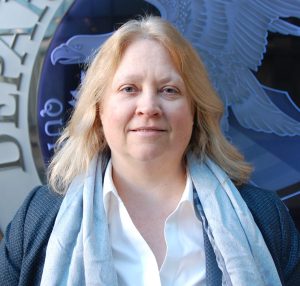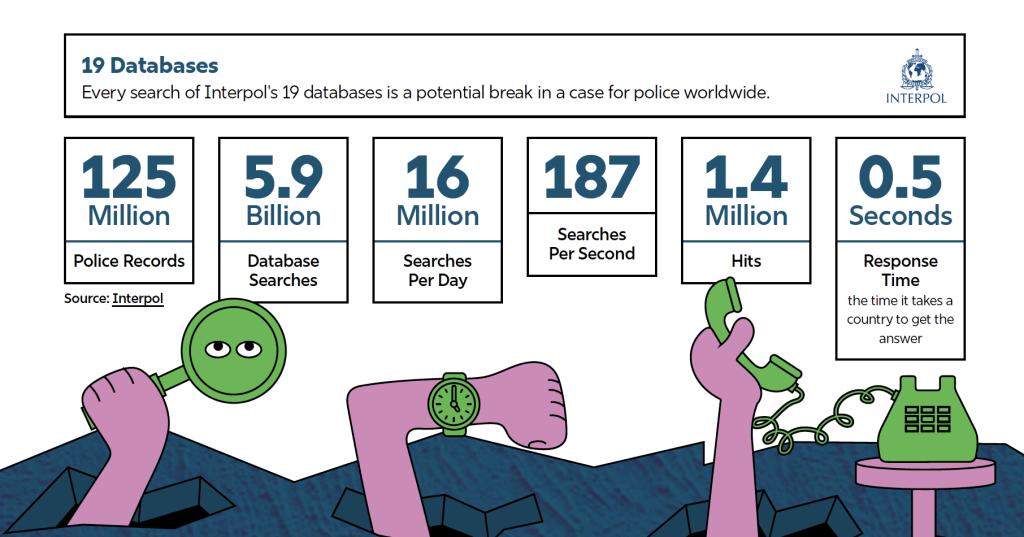Goal: Ensure that agencies are staying, if not current with technology, no more than one or two cycles behind.
People use assorted metaphors to describe modernization: a journey, construction project, ballgame, etc. But Heather T. Kowalski, Chief Information Officer for Interpol Washington, calls it something else: a lava flow. One improvement needs to solidify, she said, before others can follow, advancing a little further each time.
Some agencies have made more progress with that than others, and agencies with outdated systems are severely limited. For instance, “If you’re on Windows XP and you’re relying on faxes, those tools are so old that [new] analysis tools can’t read [your data],” Kowalski said. “Not only are you not benefiting from what these tools can provide, … you also can’t contribute anything,” she added.

The further behind your technology is, the more financially difficult modernization becomes because agencies must anticipate their budgets years in advance — often before the tools they need fully exist, Kowalski said.
And with an unthinkable amount of data in the world, errors are inevitable with outdated IT. Automation, however, limits the chances that a tired analyst will enter a name incorrectly and that mistakes will cascade into other agencies.
“The sheer quantity of data that’s being produced … has forced a way of collecting and storing and labeling and managing that data, which has then led to a drive to use the data, which has driven some new tools,” she explained.
Be Clear and Realistic
It’s easy to be enamored with the latest IT solutions, and non-technologists are particularly susceptible, Kowalski said. But to advance data technology effectively, someone must offer honest feedback about costs, contingencies and restraints — including whether existing infrastructure will support the IT innovation.
“If you haven’t done the hard work up front — your technology, your data processing, your reporting technique — then all you did was pay for some bells and whistles that aren’t really going to benefit you,” she added.
Decision-makers need to remember that they work for the public and be good stewards of taxpayer money. “We need to be careful that we’re not just deploying these solutions so that we can say, ‘Oh, look what I did,’” Kowalski said. “Are we doing something simply to do it, or are we doing it because it really adds value to our mission?”
Think Spherically
It would be wonderful if government made decisions that everyone could understand, she mused. But that requires agencies to follow a logical progression of ideas based on what Kowalski calls spherical or 3D education. Instead of thinking just about the data itself, you need to understand what the data connects to.
“We need to understand that everything is related and that everybody needs to learn,” she said, so that agency staff know what technology and other options to pursue.
From leaders to strategic technologists to new hires, organizations must train their staff to understand and question data and draw meaningful connections. And, when thinking about modernization one or two steps down the road, agencies need to consider how newer employees use and interpret technology, Kowalski said.
Young workers will replace retirees in significant numbers within 10 years, but young people haven’t been trained to question data they find on the internet, and that threatens data integrity, she cautioned: “Your decisions, derived from data, are only as good as the data you have.”
A Vision of Collaboration
Many rules that prevent interagency data sharing are perfectly valid. But Kowalski said that various events have taught this country about the importance of letting government agencies coordinate.
Right now, Interpol, which is a component of the Justice Department, gets information from its partners, but a significant amount of data remains untapped. “I want to be able to metaphorically knock on the door of, pick an entity, and say, ‘Hey, we have these 27 questions. Do any of these trigger anything in your system?’” she explained.
And if the entity says yes, perhaps recognizing a bank account or a person, then “we can get together on a very specific focus… and compare notes,” said Kowalski. “There should be a way to connect the pieces.”

This article appeared in our guide, “Tools and Tactics for Employee Engagement.” For more insights on bringing out the best in your employees, download the guide:





Leave a Reply
You must be logged in to post a comment.